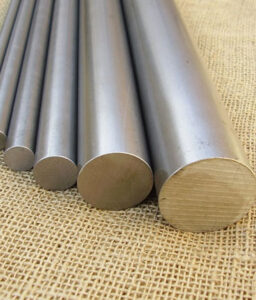Introduction
In the realm of materials science, strength stands as a sentinel guarding against the forces of stress and deformation. The alloying elements within stainless steel orchestrate a symphony of attributes, sculpting the strength that determines its suitability for diverse applications. Enter the resilient domain of 410 stainless steel, a testament to the meticulous balance of components that forge its robust character. In this illuminating exploration, we delve deep into the labyrinth of factors that contribute to the strength of 410 stainless steel, unraveling the interplay of alloying elements, microstructure, heat treatment, crystal lattice, and the intricate web of metallurgical phenomena.
1. The Structural Citadel: Unveiling the Significance of Strength
 Strength underpins the integrity of materials, determining their ability to endure mechanical stresses and perform under load.
Strength underpins the integrity of materials, determining their ability to endure mechanical stresses and perform under load.
2. Beneath the Surface: Composition Overview of 410 Stainless Steel
The composition of 410 stainless steel includes:
- Chromium (Cr): 11.5% – 13.5%
- Carbon (C): 0.08% – 0.15%
- Manganese (Mn): Up to 1.0%
- Silicon (Si): Up to 1.0%
- Phosphorus (P): Up to 0.04%
- Sulfur (S): Up to 0.03%
These constituents lay the foundation for its strength.
3. Alloying Alchemy: The Role of Carbon and Chromium
Carbon and chromium synergize to fortify 410 stainless steel:
- Carbon’s Carbides: Carbon combines with chromium to form carbides, enhancing hardness and strength.
- Chromium’s Structural Role: Chromium’s solid solution strengthening augments mechanical properties.
4. Microstructural Marvels: Influence of Crystal Structure
Crystal structure imparts strength:
- Body-Centered Cubic (BCC) Structure: Affecting the arrangement of atoms and deformation behavior.
- Martensitic Transformation: Strengthening through phase transformation during quenching.
5. Forged in Heat: Heat Treatment’s Crucial Contribution
Heat treatment molds strength:
- Quenching: Rapid cooling after heating leads to martensitic transformation and higher strength.
- Tempering: Controlled heating and cooling balance strength and toughness.
6. Strengthening Dance: Precipitation Hardening and Phase Transformations
Precipitation hardening magnifies strength:
- Formation of Precipitates: Precipitates within the microstructure bolster hardness and strength.
- Aging Process: Controlled heat treatment enhances the distribution of precipitates.
7. Defying Dislocations: Strengthening through Alloying Elements
Alloying elements combat dislocations:
- Solid Solution Strengthening: Alloying elements hinder dislocation movement, augmenting strength.
- Manganese and Silicon: Reinforcing the crystal lattice and preventing dislocation motion.
8. Size Matters: Grain Size and its Impact on Strength
Grain size influences strength:
- Fine Grains: Smaller grains hinder dislocation movement, elevating strength.
- Controlled Grain Growth: Heat treatment controls grain growth for optimized strength.
9. Stress and Strength: Deformation Mechanisms and Yield Strength
 Yield strength emerges as a sentinel against deformation:
Yield strength emerges as a sentinel against deformation:
- Yield Point: The stress at which plastic deformation begins.
- Dislocation Interactions: Alloying elements obstruct dislocation movement, enhancing yield strength.
10. Achieving Balance: Tensile Strength and Ductility
Strength and ductility share an intricate balance:
- Tensile Strength: Maximum stress a material can withstand before failure.
- Ductility: The ability to deform without fracture.
11. Empowering Engineers: Utilizing Strength for Design
Engineers harness strength for design:
- Structural Applications: Choosing materials with optimal strength for load-bearing structures.
- Safety Factors: Incorporating safety margins to ensure structural integrity.
12. Crafting Innovations: Advancements in Strengthening Techniques
Advancements redefine strength enhancement:
- Nanostructured Alloys: Nano-sized grains for exceptional strength.
- High-Entropy Alloys: Harnessing multiple elements for tailored strength properties.
13. Frequently Asked Questions (FAQ)
Q1: Can strength be improved by increasing carbon content?
A1: Increasing carbon content enhances strength, but must be balanced with considerations for brittleness and other mechanical properties.
Q2: How does heat treatment impact the strength of 410 stainless steel?
A2: Heat treatment influences the microstructure and phase transformations, crucially impacting strength.
Q3: Are there limits to how much strength can be achieved in 410 stainless steel?
A3: Yes, there are limitations based on the material’s composition, crystal structure, and heat treatment processes.
Q4: Does fine grain size always result in higher strength?
A4: While fine grains generally lead to higher strength, other factors like alloy composition and microstructural stability also play a role.
Q5: How can strength enhancement impact the applications of 410 stainless steel?
A5: Enhanced strength expands the range of applications, from structural components to high-stress environments.
Conclusion
The strength of 410 stainless steel emerges as an intricate tapestry woven from the synergy of alloying elements, microstructural arrangements, heat treatment transformations, and the intricate dance of dislocations. As the alloy unveils its formidable strength, it stands as a testament to the intricate realm of metallurgical engineering, where the balance of attributes results in materials that triumphantly defy the forces of deformation and stand resolute against the challenges of their applications.
